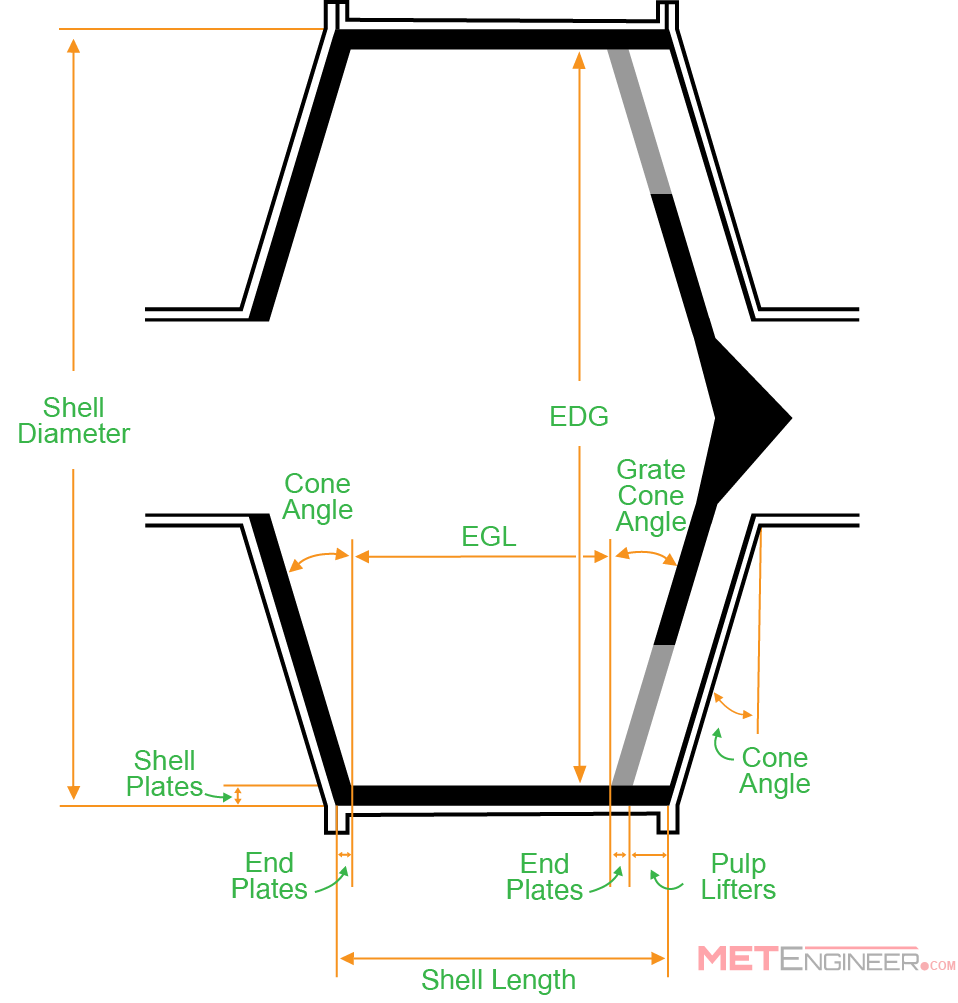
The Metallurgical Engineer's Toolbox
SAG/Ball Mill Sizing
Gross Power Draw and Specific Energy Calculator for Semi-Autogenous Grinding (SAG) and Ball MillsShell Sizing Parameters
Parameters
Value
Value
[m]
[ft]
[m]
[ft]
[degrees]
[m]
[m]
[%]
[rpm]
[%]
[rpm]

Liner System
Parameters
Variables
[mm]
[QTY]
[mm]
[mm]

Charge Fill
Parameters
Value Units
[%]
[%]
[t/m3]
[t/m3]
[mm]
Mill Power Draw Available
Description
Value Units
Power Draw - At Pinion
[kW]
Metallurgical Power Requirements
Process Data
Mass Balance - Density Fractions
Description
Value Units
Description
Value Units
[t/h]
[t/m3]
[t/m3]
[m3/h]
[t/m3]
[t/h]
[m3/h]
[t/m3]
[%]
[%]
Grinding Specifictions
Parameters
Input Value Units
[um]
[um]
[kWh/t]
[kWh/t]
Required when F80 (feed size) is larger than
transfer size
[%]
Product size setpoint required in open circuit
-
Power Required - Metallurgical
Description
Value Units
Throughput Capacity:
[t/h]
Specific Energy Required:
[kWh/t]
Power Required:
[kW]
Mill Selection Result
Description
Value Units
Available Power Utilized:
[%]